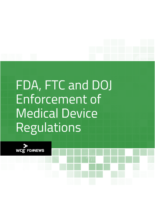
Home » Getting CAPA Right: One Expert’s Thoughts
Getting CAPA Right: One Expert’s Thoughts
Inadequate investigations and corrective and preventive actions have been one of the top reasons for 483 observations since 1997, says James Vesper, president of LearningPlus. A 30-year veteran in the pharma business, Vesper explains how to develop a successful CAPA program to uncover root causes of quality failures.
Question: Why are having adequate CAPA procedures such a problem for firms? Is it lack of understanding of FDA regulations?
Answer: It’s mostly not understanding regulator expectations, and the expectation is to do a thorough investigation to get to the root cause. A lot of companies will say the reason they had an error or failure was due to human error, and they often leave it there. But regulators around the world would say that human error is not a root cause – it’s a category – and they expect the firm to delve into that more deeply.
Saying that it’s human error begs the question of why. Did people not understand the procedure? Did they violate the procedure? Why did they violate the procedure?
One of the mistakes companies will make is to tell the FDA investigator that the solution is either to retrain the operator or rewrite the procedures. The FDA is pushing back on this because it says companies are using “retraining the operator” as a default approach, and “retraining” often signals an inadequate investigation.
Q: How can management help change that?
A: Number one, they need to support doing a thorough investigation, which takes time. The FDA has the expectation that investigations will be completed in 30 days, but it wants companies to get to the root cause even if it does take a bit longer. If it takes longer — 45 to 60 days, for example — the caveat is companies need to provide interim reports to their quality units to keepthem up to date on what is going on, what the issues are and what they are doing to protect the product and the patient.
Q: When does a firm need to initiate a CAPA? Does it need to do so for just one out-of-specification result?
A: Yes, for an OOS result, a company needs to initiate a CAPA investigation and then decide what to do. Sometimes you can rework something, but sometimes you have to reject the device.
Q: What are the elements of a well-written report?
A: First is the problem description, which will help you get to the root cause. Another element is determining the scope and impact. What products and lots were affected? The impact assessment is whether the problem has a negative effect on the patient or device availability.
Using problem-solving techniques, you can conduct a thorough investigation to get to the root cause. Sometimes you may not get to the root cause, but you need to be able to demonstrate what you did and what type of monitoring you will institute, so if the problem happens again, you’ll be in a better position to get to the root cause.
Finally, companies need to determine appropriate corrective action and show that it has a positive impact on the problem.
Q: In reading Form 483s and warning letters, it appears that companies often don’t investigate other lots when there is a failure. Is that a red flag for the FDA?
A: Yes, and companies will always be put on the defensive by the investigator to answer how they can prove the problem only occurred in that lot. Another red flag is not having a rationale or justification on what the firm ruled out. For example, how do they know it was not the raw material that caused the problem?
Q: Can inspections that go poorly also be an opportunity?
A: Definitely. I worked with one company that was having lots of regulatory problems, and the quality control manager spent a lot of time talking with the lead FDA investigator. She said she learned more from that investigator in two weeks than she had in the previous 10 years.
If a company has a bad inspection that’s related to investigations and corrective actions, it should look at its overall system and see if it has defined risk assessment points to triage the trivial from the significant.
[Editor’s note: Want to know more about how to conduct a thorough CAPA investigation? Don’t miss the Conducting Advanced Root Cause Analysis and CAPA Investigations workshop, Sept. 16-17. For more information, visit: http://www.fdanews.com/capapc.]
— Tamra Sami
Upcoming Events
-
23Apr
-
25Apr
-
07May
-
14May
-
30May
